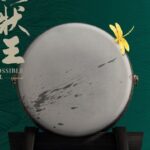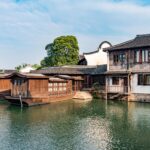The Thousand-Buddha Cave is composed of two caves, the front cave and the back cave. In the late Qing Dynasty, the abbot of Xinghua Temple on Yunlong Mountain had the back cave blocked. On both sides of the entrance of the front cave stand stone carvings. The inscriptions are no longer legible. The cave is about 12 meters deep. On the cliff wall inside the cave, there are also a thousand Buddha statues carved. These stone Buddhas are neatly arranged and in different postures, either standing, sitting or lying. The carving is exquisite and lifelike. The small ones are less than a foot. Looking from afar, the niches are like pigeon lofts and beehives. It is said that there are more than a thousand Buddha statues, so it is called the Thousand-Buddha Cave.
On the left side in the northwest direction inside the Thousand-Buddha Cave, there is a subsidiary cave. The entrance of the cave is very small and can only accommodate one person who has to bend down to enter. The cave is about seven or eight meters deep. Inside the cave, about ten or so people can be accommodated. The soil in the basic soil layer of more than ten square meters inside the cave is different from the soil in other places. There are actually five colors: blue, red, white, black, and yellow. Although some of the five-color soil has solidified like stones, it is still colorful. The extremely legendary five-color soil is precisely the symbol of the ancient people’s worship of the land.

The Thousand-Buddha Cave is a natural karst cave. Water drips continuously inside the cave all year round, making a pattering sound when it hits the ground. The Buddhist masters of the temple often use various vessels to catch water. The water inside the cave tastes extremely sweet.

Must-see tips for five-color soil: refers to soil of five colors, blue, red, white, black, and yellow. The five colors of soil represent five directions of east, south, west, north, and center (east is blue soil, south is red soil, west is white soil, north is black soil, and center is yellow soil).

Xuzhou Thousand-Buddha Temple on Mount Chuwang
The Thousand-Buddha Cave is composed of two caves, the front cave and the back cave. In the late Qin[...]









